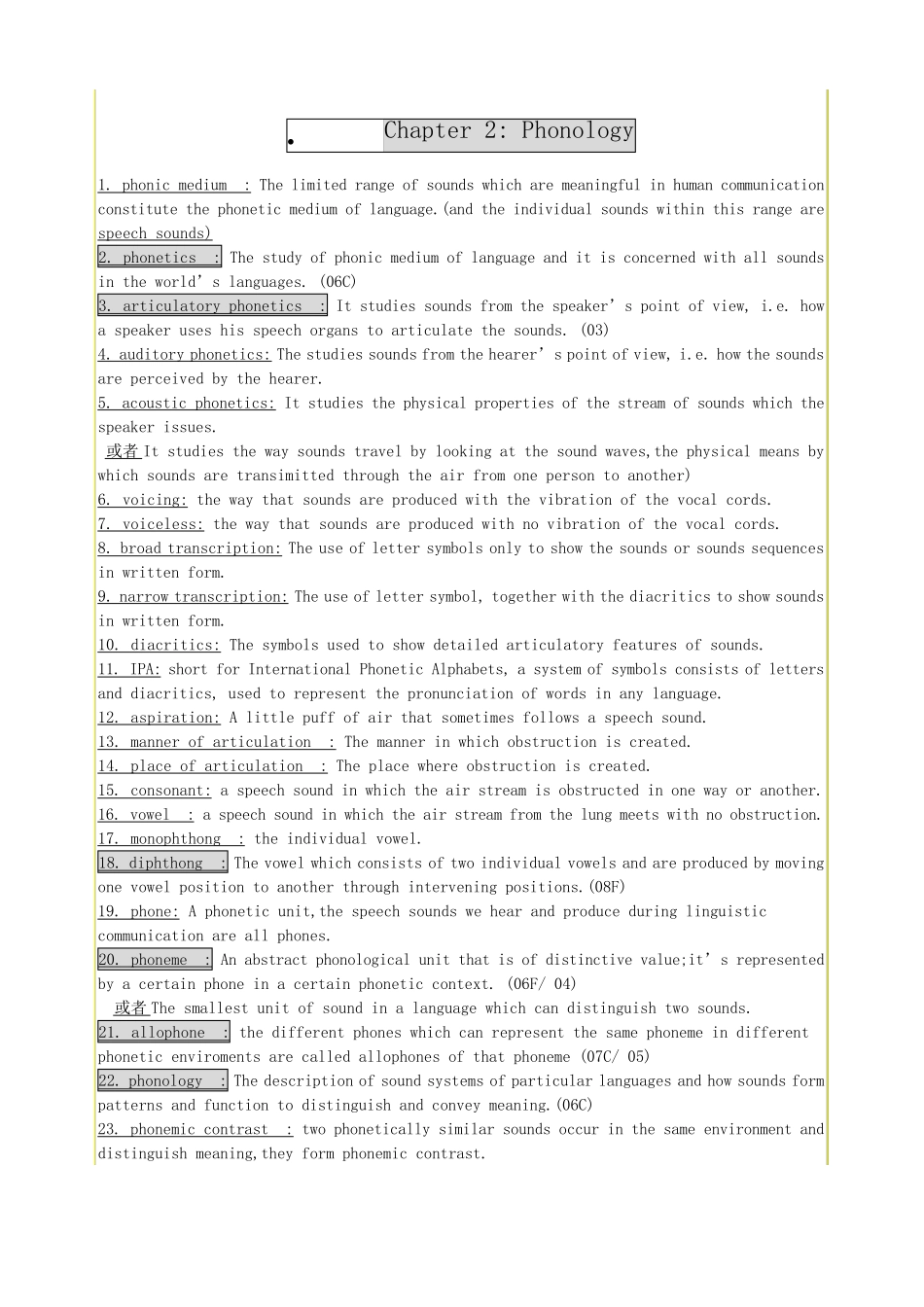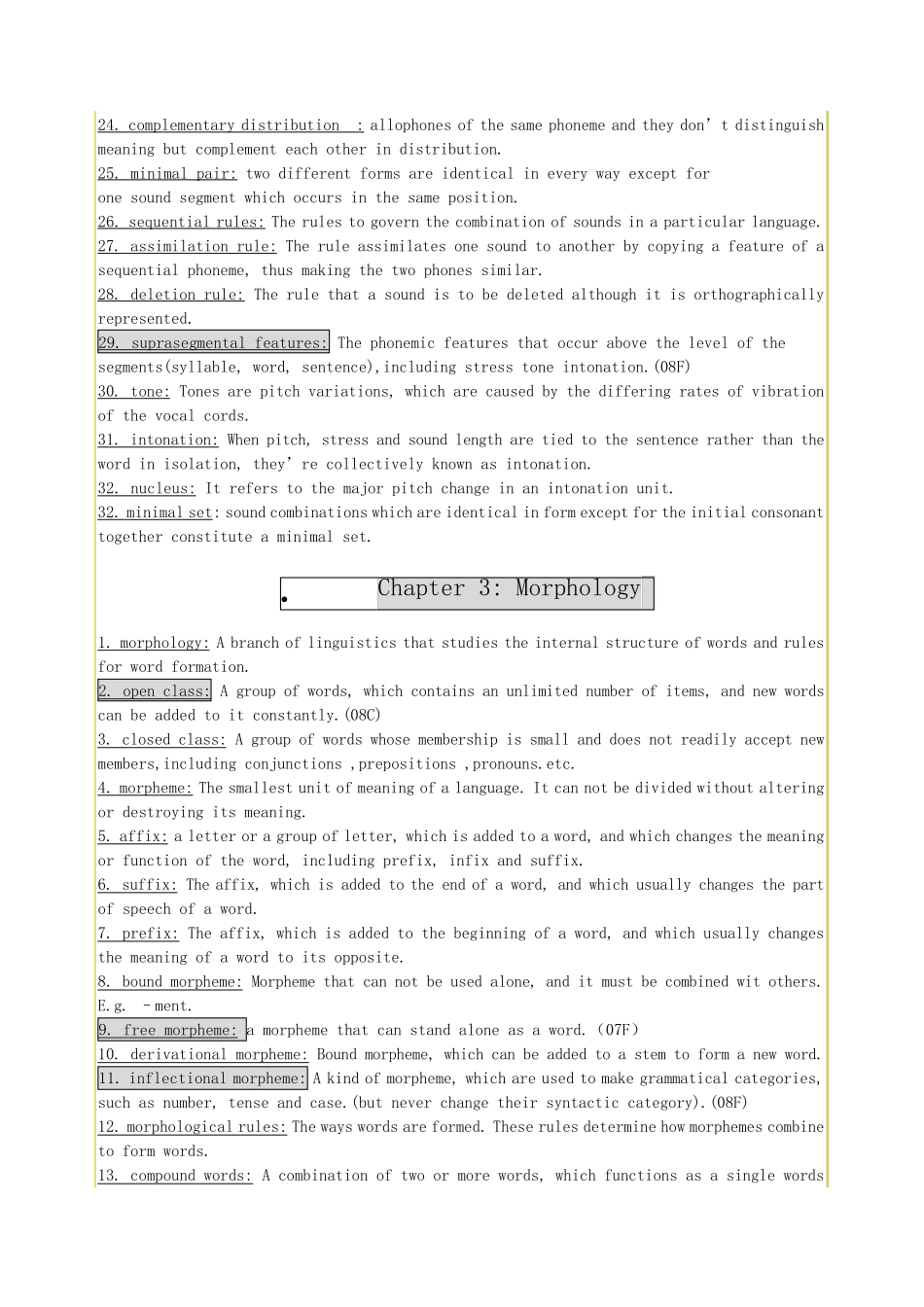• Chapter 1: Introduction 1. Linguistics: Linguistics is generally defined as the scientific study of language. 2. general linguistics: The study of language as a whole. 3. applied linguistics: the application of linguistic theories and principles to language teaching, especially the teaching of foreign and second languages. 4. prescriptive: If linguistic study aims to lay down rules for “correct and standard” behavior in using language, ,it is said to be prescriptive.( i.e. to tell people what they should and should not say). 5. descriptive: If a linguistic study aims to describe and analyze the language people actually use, it is said to be descriptive.(09C) 6. synchronic study: The description of language at some point of time in history is a synchronic study. (06C/ 04) 7. diachronic study: It’s a historical study of language,it studies the historical development of language over a period of time. (06C) 8. langue: Lange refers to the abstract linguistic system shared by all the members of a speech community. 9. parole :Parole refers to the realization of langue in actual use. 10. competence : The ideal user’s knowledge of the rules of his language.(08F/09C) linguistic competence:universally found in the grammars of all human languages,syntactic rules comprise the system of internalized linguistic knowledge of a language speaker. competence 有什么区别?? 11. performance : The actual realization of this knowledge in linguistic communication. 12. language : Language is a system of arbitrary vocal symbols used for human communication. 13. design features : Design features refer to the defining properties of human language that distinguish it from any animal system of communication. 14. arbitrarines...


